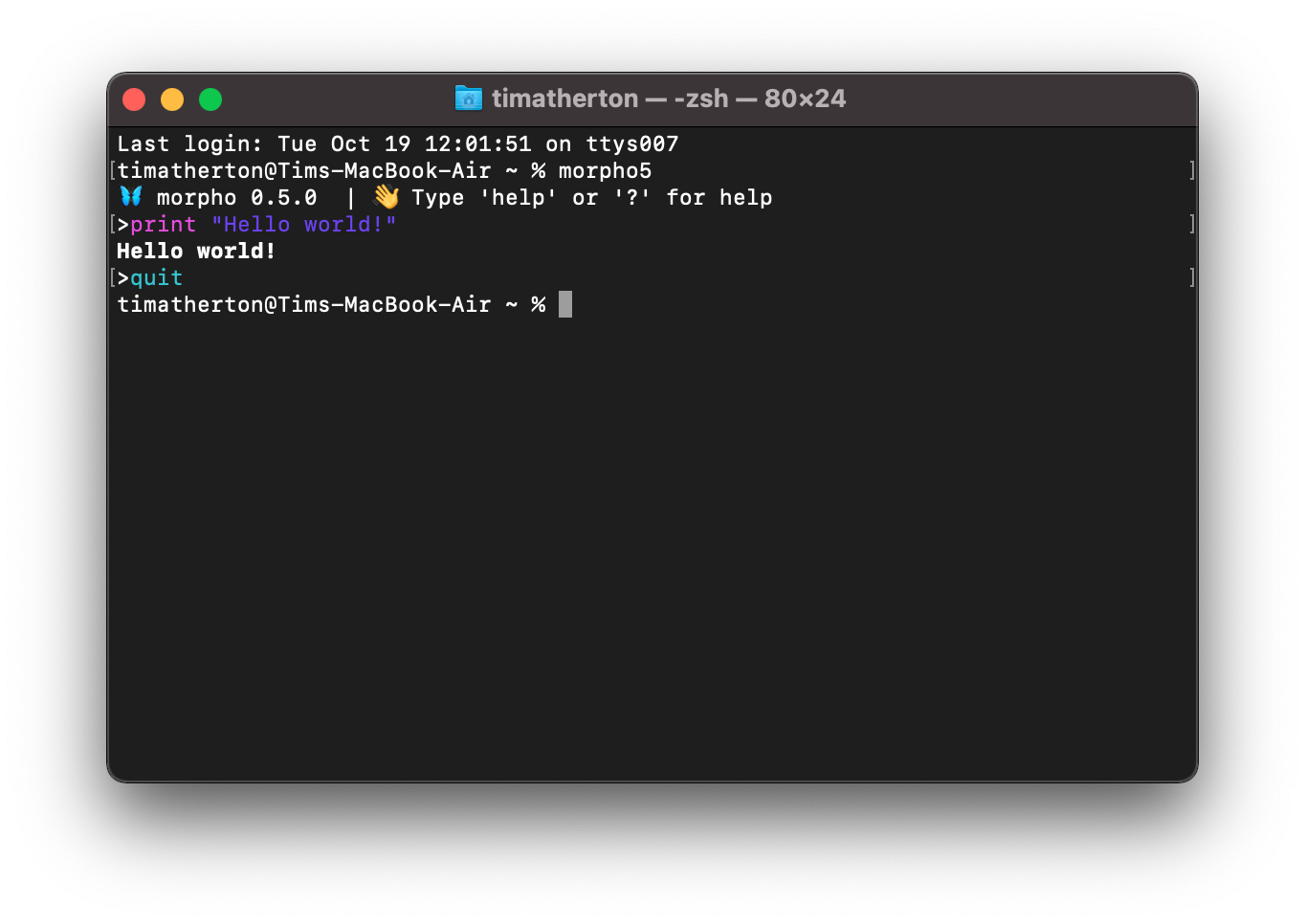Using Morpho
Morpho is a command line application, like python or lua. It can
be used to run scripts or programs, which are generally given the
.morpho file extension, or run interactively responding to user
commands.
Running a program
To run a program, simply run morpho with the name of the file,
morpho6 script.morpho
Morpho supports a number of switches:
-w : Run morpho with more than one worker thread, e.g. -w 4 runs morpho with 4 threads.
-D: Display disassembly of the program without running it. [See developer guide]
-d : Debugging mode. Morpho will stop and enter the debugger whenever a @ is encountered in the source. [See developer guide]
-p : Profile the program execution. Useful to identify performance bottlenecks. [See developer guide]
Interactive mode
To use morpho interactively, simply load the Terminal application (or equivalent on your system) and type
morpho6
Command line interface for Morpho

As shown in the figure above, you'll be greeted by a brief welcome and a
prompt > inviting you to enter morpho commands. For now, try a
classic:
print "Hello World"
which will display Hello World as output. More information about the
morpho language is provided in the Reference section, especially
chapter Language if you're familiar with C-like languages
such as C, C++, Java, Javascript, etc. things should be quite familiar.
To assist the user, the contents of the reference manual are available to the user in interactive mode as online help. To get help, simply type:
help
or even more briefly,
?
to see the list of main topics. To find help on a particular topic, for
example for loops, simply type the topic name afterwards:
? for
Once you're done using morpho, simply type
quit
to exit the program and return to the shell.
The interactive environment has a few other useful features to assist the user:
-
Autocomplete. As you type, morpho will show you any suggested commands that it thinks you're trying to enter. For example, if you type
vthe command line will show thevarkeyword. To accept the suggestion, press the tab key. Multiple suggestions may be available; use the up and down arrow keys to rotate through them. -
Command history. Use the arrow keys to retrieve previously entered commands. You may then edit them before running them.
-
Line editing. As you're typing a command, use the left and right arrows to move the cursor around; you can insert new characters at the cursor just by typing them or delete characters with the
deletekey. Hold down theshiftkey as you use the left and right arrow keys to select text; you can then useCtrl-Cto copy andCtrl-Vto paste.Ctrl-Amoves to the start of the line andCtrl-Ethe end.